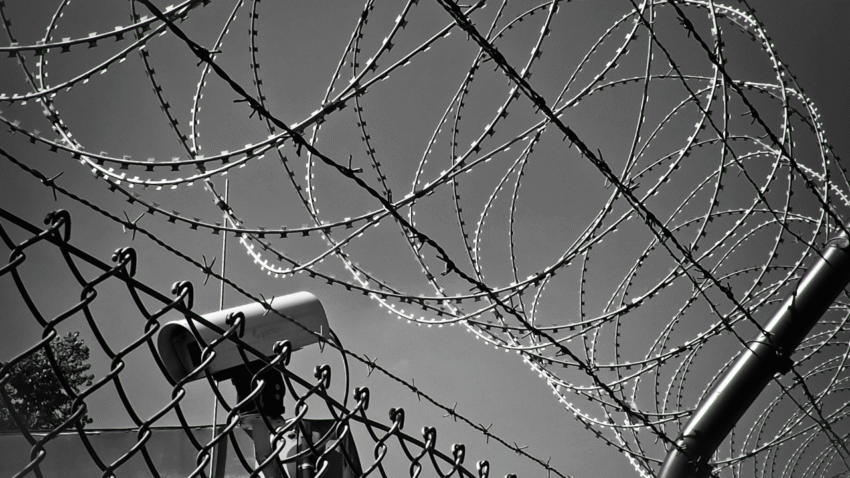Introduction
Fences stand outdoors year-round, enduring everything from scorching summers to freezing winters. Seasonal changes bring shifting soil, heavy rain, high winds, and snow—all of which can weaken posts, warp panels, and loosen hardware. Learning how to reinforce a fence for seasonal changes helps you protect your investment and avoid costly repairs. With a few smart adjustments, you can prepare your fence to survive every season while maintaining its strength and appearance.
Why Reinforcing for Seasonal Changes Matters
Each season poses unique challenges for fences:
- Spring: Heavy rains soften soil, leading to leaning or unstable posts.
- Summer: Heat and UV rays cause wood to crack, dry out, and fade.
- Fall: Strong winds and falling branches stress rails and panels.
- Winter: Snow and freeze-thaw cycles weaken foundations and rot wood.
Reinforcing your fence ensures it can handle these challenges year after year.
Step-by-Step Guide to Reinforcing a Fence for Seasonal Changes
Step 1: Inspect the Fence Before Each Season
Walk along the fence line and look for:
- Leaning or unstable posts.
- Loose pickets, panels, or rails.
- Rusted fasteners or corroded hinges.
- Cracks, warping, or signs of rot in wood.
Tip: Do inspections at the start of spring and fall for the best seasonal preparation.
Step 2: Reinforce Fence Posts
Posts are most vulnerable during seasonal shifts.
- Spring & Winter: Reset loose posts with gravel and concrete to prevent leaning.
- Summer: Seal wooden posts to prevent drying and cracking.
- Fall: Add diagonal braces or H-braces to prepare for strong winds.
Pro Tip: Posts should always be buried at least 24–36 inches deep to resist frost heave and soil movement.
Step 3: Strengthen Rails and Panels
Rails and panels take the brunt of seasonal pressure.
- Add metal brackets or corner braces where rails meet posts.
- Replace cracked or warped rails with pressure-treated wood.
- Secure panels tightly to posts to reduce rattling during wind.
- For chain-link fences, install tension bars and mid-rails for extra durability.
Step 4: Weatherproof the Materials
Each season affects materials differently, so proper weatherproofing is essential.
- Wood: Apply stain or sealant every 2–3 years to block moisture and UV damage.
- Metal: Use rust-resistant paint to prevent corrosion.
- Vinyl: Clean with soap and water to prevent mold or mildew buildup.
Pro Tip: Apply weatherproofing treatments in late summer or early fall before winter moisture sets in.
Step 5: Prepare for High Winds
Fall storms and spring gusts can topple weak fences.
- Ensure posts are secure and braced.
- Leave small gaps between pickets in solid fences for airflow.
- Add lattice tops or decorative cutouts to reduce wind load.
- Trim nearby trees and branches that could fall onto the fence.
Step 6: Protect Against Moisture and Soil Movement
Waterlogged soil and freeze-thaw cycles weaken fences.
- Add gravel around posts for drainage.
- Slope soil away from the fence line to redirect water.
- Install French drains in areas prone to pooling water.
- Use concrete collars around posts to shed water away from the base.
Step 7: Reinforce Gates and Hardware
Gates are often the weakest link in seasonal weather.
- Upgrade hinges to heavy-duty, rust-resistant models.
- Install self-closing or lockable latches.
- Add diagonal bracing to prevent sagging.
- Lubricate hardware each season to keep it working smoothly.
Step 8: Seasonal Adjustments for Different Materials
Different fence types need specific reinforcement:
- Wood fences: Sand rough spots and re-stain before winter.
- Vinyl fences: Check for cracks in extreme cold—reinforce with support rails if needed.
- Chain-link fences: Tighten tension wires each spring to compensate for soil shifts.
- Composite fences: Inspect joints and clean to prevent mold buildup after rainy seasons.
Step 9: Create a Seasonal Maintenance Routine
Consistent care is the best reinforcement strategy.
- Spring: Reset posts, clean mildew, check drainage.
- Summer: Seal or stain wood, inspect for UV damage, tighten hardware.
- Fall: Brace posts, clear debris, prepare for storms.
- Winter: Remove snow buildup, knock off ice, inspect for frost heave.
Common Mistakes to Avoid
- Mistake: Only reinforcing after damage occurs.
Solution: Preventive reinforcement saves money and extends lifespan. - Mistake: Using untreated wood.
Solution: Always choose pressure-treated lumber or apply protective sealants. - Mistake: Neglecting drainage.
Solution: Poor drainage is a top cause of post failure—fix water flow issues early. - Mistake: Forgetting seasonal inspections.
Solution: Twice-a-year inspections catch problems before they escalate. - Mistake: Ignoring gates.
Solution: Gates see the most use—reinforce them with heavy-duty hardware.
Extra Fence Tips & Hacks
- Install post anchors: Keep wooden posts elevated above damp soil.
- Use cross-bracing: Long runs of fence stay straighter with diagonal bracing.
- Add gravel strips: Reduce weed growth and prevent soil erosion at the base.
- Combine reinforcement with landscaping: Shrubs act as natural windbreaks and protect fences year-round.
For more durability strategies, check out our guide on how to stop soil erosion around fence lines—erosion control pairs perfectly with seasonal reinforcement.
Conclusion
Learning how to reinforce a fence for seasonal changes is the key to long-lasting security, durability, and curb appeal. By strengthening posts, weatherproofing materials, preparing for wind, and creating a seasonal routine, you’ll protect your fence against everything from summer heat to winter frost.
Pro Tip: Think ahead—seasonal reinforcement isn’t just repair, it’s prevention. A few hours of preparation now can save hundreds of dollars in repairs later.
Bookmark this guide and use it as a checklist before each season—your fence will stand tall, straight, and secure all year long.
